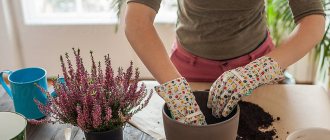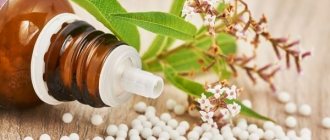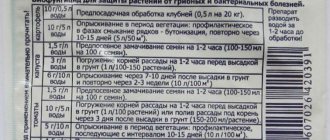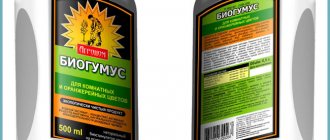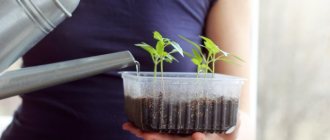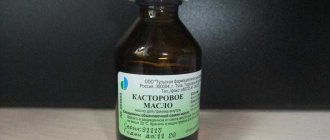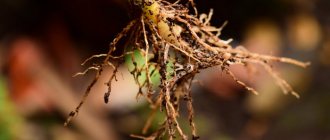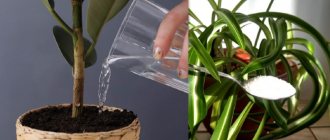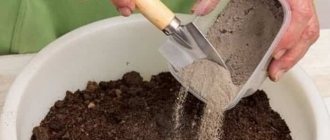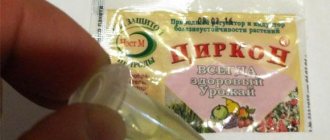What are the benefits of banana peels for plants?
Banana peel, as a fertilizer for flowers, has confirmed its effectiveness, judging by the reviews of summer residents and flower growers.
For professional cultivation of seedlings in greenhouses, balanced chemical complexes of organic and mineral substances are used. At home, it is practiced to fertilize seedlings and indoor flowers with fertilizers made from natural products.
Composition of microelements in banana peels:
| Item name | Benefits for plants |
| Potassium | strengthens the plant’s immunity to diseases, compacts the stem structure. |
| Phosphorus | promotes budding and the appearance of numerous ovaries on vegetables, increases the frost resistance of plants. |
| Magnesium | participates in the processes of photosynthesis and stimulates it in poor sunlight. |
| Sodium | promotes rapid rooting during transplantation and strengthens the root system of plants. |
| Nitrogen | increases the volume of green mass of plants, stimulates the development of young shoots. |
There is a minimal amount of nitrogen in the peel that supports the plant, but prevents it from growing and throwing out flowers. To extend the flowering period of houseplants, you need to perform at least 2 fertilizing with banana fertilizer. A large amount of potassium and phosphorus in the peel will support flowering and prolong its time.
Banana peel for flowers infused in water
The fertilizer is equally effective when fed “by the leaf” or when applied at the root. For example, for violets (Saintpaulias) it is not advisable to spray; in this case, it is advisable to introduce fertilizer from a tray or through a wick. Flower growers often use this technique in the summer.
How to use the peel?
It can be called the cheapest feeding, but it is practically in no way inferior to store-bought products.
You can use it in several ways:
- Chop with a knife or scissors, and also place whole in tubs . This applies to fresh raw materials. The procedure is carried out during transplantation, the peel is laid out on the drainage.
- A powder is prepared from dry skins. They cover the top layer of the substrate before watering.
- You can also make compost .
- The peel is often used as a cleanser. They wipe the leaves of plants with it, removing dust from them and polishing them at the same time.
This video talks about the beneficial properties of bananas and how you can make excellent fertilizer for your garden and indoor plants from its peel.
Disadvantages of banana feeding
Banana peel as a fertilizer for flowers is not capable of harming plants, but it must be used, like all fertilizers, according to the rules.
Disadvantages of using banana peel based nutritional formulas:
- Bananas, during long transportation from producing countries, are treated with aggressive chemical compounds. Before using the product, it must be thoroughly washed with a brush under hot water so that the protective layer on the surface of the fruit does not harm the ecosystem of indoor flowers and vegetables.
- Banana peel has a specific sweet aroma, which turns into a ready-made fertilizer for flowers and vegetables. Its aroma attracts ants and small midges, which harm the plant.
- If you bury a banana peel under the root of a plant and do not completely cover it with soil, rotting processes will begin on its surface with the formation of mold, which can damage the base of the stem and the root of the plant.
- Even though the entire set of useful microelements and organic acids is available, their quantity will not be enough when using only this type of fertilizer.
Experienced gardeners alternate feeding with banana peels and “green manure”, which is rich in nitrogen. However, this method is not suitable for home use, since “green fertilizer” has a specific smell of humus.
During the growing period of bananas, they are often stimulated with growth hormones, some of these substances are stored in the peel. Therefore, the use of banana fertilizer is more effective for young, growing flowers and seedlings. Mature plants may react negatively to hormones.
Benefits and harms
Summer residents know that natural remedies are better than chemicals. Banana skins are no exception. Here is a list of its beneficial properties:
- increases immunity;
- promotes normal growth and development of crops, rapid formation of the root system;
- normalizes photosynthesis processes;
- helps improve the taste of fruits and increase the sugar content;
- stimulates the formation of ovaries.
After such fertilizing, vegetable seedlings look strong, healthy, take root better, and quickly adapt to new conditions in beds or in closed ground (greenhouses, hotbeds, tunnels).
The application of fertilizer improves the composition and structure of the soil, saturates it with useful elements, while eliminating the ingress of harmful and toxic substances. Banana peels are recommended as a substitute for potassium chemical fertilizers.
At the same time, infusions and solutions prepared from the skin cannot be considered a panacea. The product contains only some of the nutrients necessary for plants, so it is necessary to use other types of fertilizers.
The peel is useful only if the fertilizer is prepared correctly. Drying and freezing are mandatory procedures that destroy harmful substances (ammonium sulfate, ethylene) used when transporting batches of bananas. These substances do not accumulate in the pulp, but remain on the skin of the fruit.
You cannot scatter waste around the site (under bushes, in beds), since peels that are not buried in the ground become moldy, rot, and attract flies and gnats.
For which indoor and garden plants is banana peel fertilizer suitable?
Banana peel as a fertilizer for flowers is considered a universal nutritional option. However, experienced flower growers and gardeners advise using it to strengthen seedlings or after the first picking, when young seedlings are stressed.
Flowering plants react more favorably to fertilization with banana peels:
- Saintpaulia (violets);
- gloxinia;
- begonias;
- anemones;
- streptocarpus (relatives of violets with large bell-shaped flowers);
- calceolaria;
- azaleas;
- pelargonium.
For decorative deciduous indoor flowers, the amount of nitrogen in this type of fertilizer is not enough. It can be combined with fertilizing with urea, which will provide the required amount of nitrogen. With this combination, the green mass of plants will become juicy and bright.
This product is also suitable for feeding vegetable seedlings (tomatoes, peppers, eggplants, cucumbers), which are sown in seedling boxes in the spring. Watering should be carried out after the appearance of 2 true leaves on the vegetable seedling.
Application of the simplest banana fertilizer on the site
In the form of solutions, banana peel flower fertilizer is added to each flowerpot twice a week. Consumption is about 1 cup per plant. For indoor flowers use 2 tbsp. l. for 1 flowerpot. Repeat treatment every week. Instead of watering, spraying can be used. This will cause annuals to bloom earlier, delighting you with their unusual splendor. Perennial flowers are not sprayed, since lush flowering depletes the crops. For tomatoes, take half a glass of liquid in the beds, and for cucumbers - a quarter glass per 1 bush.
Methods for preparing fertilizers and instructions for their use
Banana peel fertilizer can be prepared in a variety of ways. However, the properties of such mixtures differ and have their own limited time frame for use.
Roasted skin powder
This type of fertilizer is applied to the soil in dry form. Preparation of the product will take some time and is advisable when used on a small number of plants.
Cooking method:
- The banana must be thoroughly washed with hot water and the peel removed.
- The peel needs to be wiped dry and spread on a baking sheet.
- The oven needs to be preheated to 180°C and a baking sheet with the peel placed in it (it can be pre-chopped into fragments of 2 - 4 cm).
- You need to keep it in the oven until the banana peel is completely dry (it will turn black and shrink in size).
- After drying, the fragments should be ground in a coffee grinder and stored in a glass container with a tightly closed lid.
This fertilizer is used to enrich the soil. It is scattered in a thin layer under the plant and the soil is loosened. It is recommended to mix it with soil mixture when transplanting plants or picking seedlings.
Compost
The easiest way to use banana peels is used by summer residents who have special compost pits. They throw 10-20 pieces there in early spring. skins and use humus to fertilize the land in the fall.
Infusion for flowers
The use of infusion for watering house plants is considered the most optimal option, which preserves most of the organic compounds in the peel. The disadvantage of this fertilizer is the short shelf life of the product (about 5-7 days). Therefore, the infusion is prepared from 2-3 skins per week of use.
How to prepare banana peel infusion:
- Clean and dried skins must be cut in half and placed in the bottom of a clean liter jar.
- The raw materials must be filled with water at room temperature to the top of the jar. Close it and leave in a dark, warm place for 2-3 days.
- Before watering, the mixture must be diluted with water in a 1:1 ratio.
The liquid in the jar will become cloudy and take on a sweet banana smell. Fermentation may occur (depending on the temperature at which infusion is carried out). It is recommended to water the plants with infusion 2 times a week.
Mixture of soil + banana peel
To prepare the fertilizer you will need a lot of time and a large (10 liter) bucket that closes tightly.
You can also make a compost mixture for home use:
- Clean and dry banana skins should be cut into 3-5 cm pieces.
- In a 10 liter bucket you need to collect rich black soil and mix it with 5-10 skins.
- It is recommended to pour 100 g of Baikal on top of the mixture and, tightly closing the lid, leave for 3-6 weeks in a warm place (the temperature should be more than 18 ° C).
- Then the procedure must be repeated: reintroduce the peel and “Baikal” into the bucket. Leave to ferment for another 5 weeks. After this period, the compost is ready.
The mixture is added to pots of indoor plants and mixed while loosening. The use of compost is especially effective when replanting plants, then it is added to the soil composition.
When composing the mixture, it must be taken into account that excess fresh compost can damage the root system of plants. It is added in proportions of 1:3 (1 part compost and 3 parts soil).
Tropical cocktail
This type of feeding refers to complex mixtures that require a long preparation process.
To create fertilizer you will need:
- banana peel – 8 – 10 pcs.;
- water – 1 tbsp.;
- sugar – 250 g;
- dry yeast – 0.5 tsp;
Place the peel and bulk ingredients in a glass jar with a capacity of 1 liter, then pour a glass of filtered warm water on top. The jar needs to be closed with a lid and fermented in a warm place for 7 days. Then you need to strain the solution through two layers of gauze and leave to infuse in a dark place for 2 months.
After fermentation is complete, you will get a strong nutritional concentrate. For watering it needs to be diluted with water 1:10, and for foliar feeding 1:20. After the end of the fermentation cycle, the jar must be stored in the refrigerator.
Foliar feeding
Foliar feeding is popular among gardeners. This allows you to moisten the leaf surface and deliver microelements directly to the green mass of the plant. For this type of fertilizer, the concentration of the solution must be very weak so as not to damage the leaf blade.
What is the leaf nutrient mixture prepared from:
- banana peel – 3 pcs.;
- egg shells – 3 pcs.;
- magnesium sulfate – 20 g;
- water – 1.5 l.
Before preparing the mixture, you need to prepare the eggshells: rinse with soda and dry.
Cooking process:
- Banana peels need to be pureed using a blender, and eggshells can be ground with a coffee grinder.
- You need to put the mixture in a glass container (1 l) and pour magnesium sulfate into it.
- Fill the jar with filtered water to the top of the container, close the lid and shake.
The solution will be ready for use after 3 hours. This is a concentrate that needs to be diluted for leaf feeding in a ratio of 1:2. Before preparing the working solution, the liquid must be filtered through cheesecloth. It is recommended to store the jar of concentrate in the refrigerator. Foliar watering should be done by spraying liquid once a week.
Banana decoction
When preparing such a fertilizer, the amino acids will be destroyed as a result of heat treatment, but the vitamins and microelements will be included in the decoction. The boiling process will destroy all pathogens, which will allow the broth to be stored in the refrigerator for a long time.
To prepare, boil 3-4 banana peels in 1 liter of water for 10 minutes. Then the liquid must be cooled and strained through cheesecloth. This will be a mother solution (concentrate), which must be diluted in half with water before watering. It must be stored in the refrigerator.
Banana and citrus mixture
Other fruits – oranges, lemons – are also growth stimulants.
For example, to create a cocktail of tropical fruits for repeated use when watering, you need:
- banana peel – 3 pcs.;
- orange peel – 3 pcs.;
- sugar – 1 tbsp;
- water – 3 l.
To prepare the fertilizer, you will need a glass jar with a capacity of 3 liters that closes tightly. Preparation time – 1 month.
Cooking process:
- At the bottom of a clean jar (it is recommended to wash it with baking soda, rather than using household chemicals), you need to place fruit peels.
- It is necessary to pour filtered water into the jar and dissolve the sugar in it, stirring.
- Then you need to close the jar with a lid and put it in a dark but warm place for 1 month.
- After the expiration date, the liquid must be filtered through 3 layers of gauze. It is a concentrate that must be dissolved 1:10, then start watering.
It is recommended to store the jar of solution in the refrigerator and dilute it with warm water before watering. Water the plants once every 14 days.
Nourishing Green Tea & Banana Blend
Green tea contains trace elements and tannins that stimulate the development of the root system of flowers and seedlings. The combination of nutritional amino acids from banana and tannins from green tea allows you to create an effective fertilizer for any season.
For irrigation, decoctions of tea and banana peels are used (the process of preparing the decoction is described above in the article). You need to brew 2 tbsp. green tea without impurities in 300 ml of water. The tea needs to be steeped for 2 - 3 hours and strained from the brew.
In a glass container you need to mix 1:1 tea and a decoction of banana peels - this is a concentrate that must be diluted 1:1 with water before watering.
Nettle and banana mixture
To prepare the fertilizer, you will need to combine 2 infusions: from banana peel (the preparation method is described above in the article) and nettle. To prepare the infusion, pharmaceutical herbs in packages are suitable.
In a 500 ml container, pour boiling water over the nettle raw material, cover with a lid and leave for 24 hours. Then the liquid must be filtered and mixed with banana infusion. Fertilizer should be stored in the refrigerator.
It is recommended to water indoor plants once every 2 weeks. To do this, you need to mix 100 ml of infusion with 300 ml of filtered water. You can use it to water “sheet by sheet”, but then you need to dilute the mother liquor in 500 ml of water.
Mixture of banana and grape branches
Banana peel is high in nutrients, and grape branches contain a range of vitamins and microelements. In order not to destroy the beneficial properties by heat treatment, flower growers recommend enriching the soil with a dry mixture of grapevine and banana peel before planting or replanting indoor flowers.
Dry grape branches for preparing fertilizer
The nutrient mixture is combined with the substrate (2 tablespoons of the mixture are used per 3 liter pot) and poured into a flowerpot or seedling glass. Dry grape branches need to be crushed in a coffee grinder and combined with banana peel powder (1:1). The fertilizer should be stored in a dry place, wrapped in craft paper.
How to make banana powder?
The peel must be washed thoroughly. Then wipe and lay out with the inside facing up . You can string the pieces on a regular thread and dry them.
When it is completely dry, it is turned into powder and poured into a jar with an airtight lid or in a vacuum bag.
Important! In dry form, such raw materials will be stored for a long time. The main thing is to close the container tightly so that the smell does not attract insects.
Add the powder simply: ½ tsp. or a whole spoon goes to one pot. It is enough to simply scatter it in an even layer over the surface of the earth . And then water the plant. Use no more than once a month.
It can also be applied during transplantation. The powder is mixed with soil (in the same dosage). Remember that after this, potash fertilizers cannot be used for the next 30 to 60 days.
Precautionary measures
Banana peel fertilizer has a high nutritional activity, so you should not use it frequently. Each type of feeding has its own time intervals. If you add a lot of nutrients at once, this can lead to accelerated development of green mass or root system, which the plant cannot cope with and may die.
All fertilizing with banana fertilizers should be alternated with watering with filtered water. The application of other organic or mineral fertilizers during this period is not recommended.
Before preparing fertilizer according to any of the recipes, you should thoroughly rinse the banana peel under running water. For these purposes, use soft brushes, such as a toothbrush.
All liquids containing banana peels consist of a large amount of proteins; to avoid rotting and fermentation, solutions must be stored in the refrigerator. But you should not use chilled fertilizers for applying to flower pots. They must be diluted with warm, clean water to bring the overall temperature of the solution to room temperature.
Nutrient fertilizers with banana peel are suitable for both indoor flowers and seedlings. You can buy bananas in supermarkets all year round, so solutions can be prepared for young seedlings of cucumbers and tomatoes, peppers and eggplants in early spring. Flowers always respond to fertilizing with lush and long-lasting blooms, regardless of the season.
What are the benefits of banana peel?
Magnesium and potassium predominate in dried and fresh banana flower food. Other components: phosphorus and sodium, as well as iron, manganese and calcium. Not much nitrogen. This complex of substances is usually used as a stimulator of flowering and fruiting.
Benefits of banana peel fertilizer for indoor flowers:
- root growth;
- strengthening stems;
- uniform distribution of water and nutrients;
- strengthening immunity;
- normalization of photosynthesis;
- protection against diseases.
If we talk about fruit plantings, banana skins will increase the sugar content of the crop. One most often, this homemade fertilizer is used for growing indoor flowers. But there is successful experience in its use for feeding vegetable crops in open ground, garden seedlings and greenhouse vegetables.
Fertilizer for indoor flowers made from banana peels enriches the soil, gives energy to plant cells, accelerates budding, and supports seedlings after transplantation. Seeds germinate faster, and seedlings take root and grow better.
Application for indoor plants
There are several ways to use banana peels as fertilizer. One of them is watering.
Each plant requires a different approach, but there is no universal method for everyone. Fertilizers should only be applied to moist soil so as not to damage the roots of the plant. There are several points to consider when watering indoor flowers:
- The cactus is watered exclusively in the summer, and the concentration of fertilizer should be lower than for other flowers.
- Some types of indoor flowers need a break in watering, and their soil should dry out before the next feeding.
- Flowers that need constant soil moisture can be fed with this fertilizer constantly. The composition must be diluted with water in a ratio of 1 to 2.
- You need to carefully monitor soil moisture. Ground that is too wet will begin to rot. You should not overdo it with watering.
Mulching from fresh banana skins
By laying fresh banana peels on the surface of the greenhouse soil (creating a “fur coat” out of them), you can significantly improve the quality of winter soil, which is “orphaned” without the natural heat and light of the sun. The heat produced by rotting peels exceeds any type of manure in its warming abilities. But this type of mulching should not be used for seedlings.
Tips for the garden, vegetable garden and flower garden
Flower picking in April 2022 favorable days
Planting gladioli for seedlings in spring
Sowing watermelons for seedlings according to the lunar calendar
Having received support in the form of additional phosphorus, magnesium, sodium and potassium, the plants in the greenhouse (tomatoes, cabbage, and cucumbers) will thank their owners with rapid growth of greenery, abundant flowering and earlier fruiting.
Powder from ground banana peels, sprinkled on top of potting soil, can also be used as mulch. Add banana powder every 30 days.
Chopped fresh banana peel
As noted above, this is the simplest, but no less effective way to feed seedlings and seedlings. The peel needs to be cut into small pieces and buried in a hole under the root of the sprout. After 10 days, nothing remains of the peel - they decompose, completely devoting themselves to the plant. After such feeding, even sickly and frail greenery begins to grow, acquiring a healthy appearance.
Cocktail
A banana-citrus cocktail will also provide excellent nutrition for seedlings. To prepare it you need to mix several ingredients:
- peel from one banana;
- orange zest (in equal proportions with banana peel);
- 1 tablespoon granulated sugar.
Tips for the garden, vegetable garden and flower garden
Proper planting of gladioli in spring
Diseases of eggplant seedlings: description with photographs and methods of treatment
Diseases and pests of pepper seedlings and their control photo
All ingredients need to be placed at the bottom of a three-liter jar, filled with water and tightly closed with a lid. The infusion time is about 3 weeks, after which the tincture must be filtered and remixed with water in a ratio of 1 to 20. This cocktail can be fed to the plant no more than once a month.
Composition and effect on plants
The rich composition distinguishes not only the pulp of bananas, but also the peel. Each component has a positive effect on indoor flowers.
Action of substances:
- Magnesium promotes the production of chlorophyll. For this reason, a decoction of banana skins is useful to use from autumn to spring, when there is a lack of sunlight;
- nitrogen and phosphorus are indispensable for setting buds, stimulating growth, good flowering, and a strong root system;
- potassium normalizes the process of fluid consumption and has a positive effect on the roots;
- calcium ensures complete absorption of nutrients and activates root growth;
- The aroma of banana peels is not tolerated by many insects that destroy indoor plants. When adding other components with a bright smell (garlic, citrus peels), the effect is enhanced.
